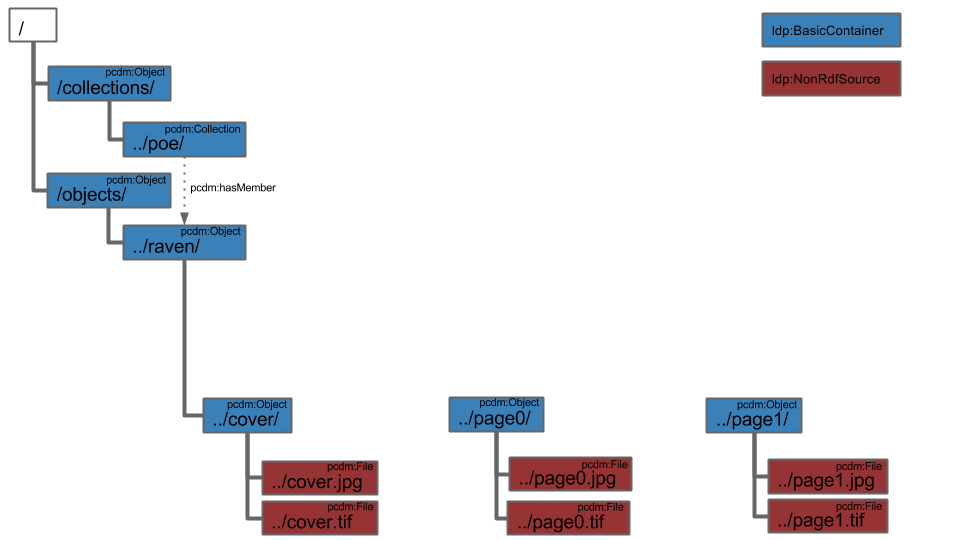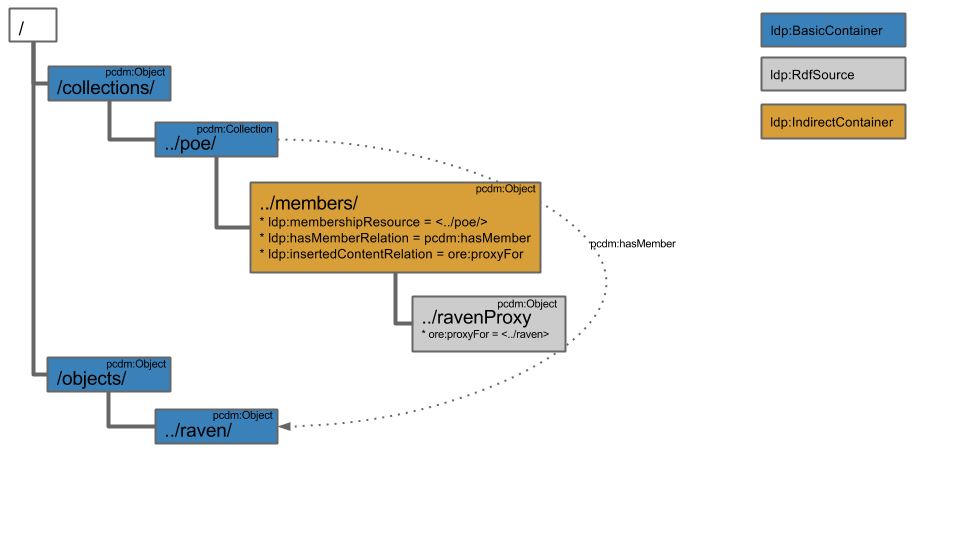Here we will begin to walk through the mechanics of creating the structures that will facilitate creation of the collection and its single member, in this case.

First, create the top-level "collections/" pcdm:Object, which is also an ldp:BasicContainer.
curl -i -XPUT -H"Content-Type: text/turtle" --data-binary @pcdm-object.ttl localhost:8080/fcrepo/rest/collections/
Where "pcdm-object.ttl" follows:
@prefix pcdm: <http://pcdm.org/models#>
<> a pcdm:Object .
Second, create the nested "poe/" pcdm:Collection, which is also another ldp:BasicContainer.
curl -i -XPUT -H"Content-Type: text/turtle" --data-binary @pcdm-collection.ttl localhost:8080/fcrepo/rest/collections/poe/
Where "pcdm-collection.ttl" follows:
@prefix pcdm: <http://pcdm.org/models#>
<> a pcdm:Collection .
Lastly, create an ldp:IndirectContainer, "members/" that will facilitate the establishment of relationships between "poe/" and the collection members.
curl -i -XPUT -H"Content-Type: text/turtle" --data-binary @ldp-indirect.ttl localhost:8080/fcrepo/rest/collections/poe/members/
Where "ldp-indirect.ttl" follows:
@prefix ldp: <http://www.w3.org/ns/ldp#>
@prefix pcdm: <http://pcdm.org/models#>
@prefix ore: <http://www.openarchives.org/ore/terms/>
<> a ldp:IndirectContainer, pcdm:Object ;
ldp:membershipResource </fcrepo/rest/collections/poe/> ;
ldp:hasMemberRelation pcdm:hasMember ;
ldp:insertedContentRelation ore:proxyFor .
Similar to the previously described ldp:DirectContainer, an ldp:IndirectContainer is an LDP construct that also activates the creation of certain RDF triples when a new resource is added as a child of this container.
Just like with a DirectContainer, when a new resource is added inside of the "members/" IndirectContainer, a new triple on the ldp:membershipResource ("poe/") will be created with the predicate defined by the ldp:hasMemberRelation property ("pcdm:hasMember").
However, the difference from a DirectContainer is that the object of the created triple is not the newly added child, but instead the resource defined by the ldp:insertedContentRelation property (ore:proxyFor, in this case) found on the newly added child of this container.
We will see this in action next!



2 Comments
Stefano Cossu
In "Collection - Create IndirectContainer":
Shouldn't this be "The object of the created triple is not the newly added child"... in the graph I see that the object of the pcdm:hasMember predicate is ../raven, which is defined by the ore:proxyFor in ../ravenProxy.
Am I missing something?
Andrew Woods
Stefano Cossu, yes. Thanks for catching that error. It has been updated: